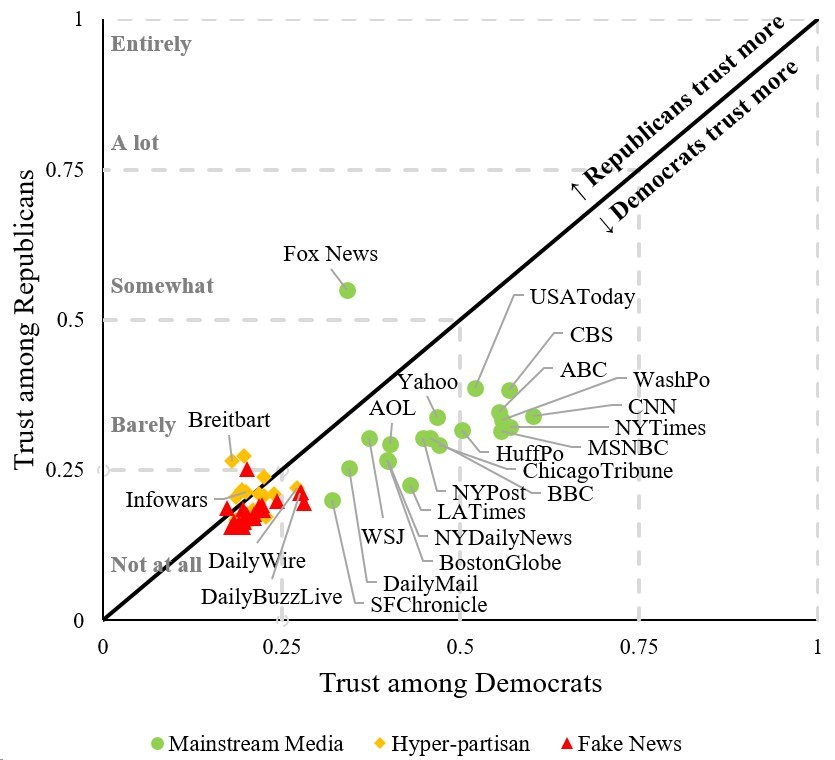MIT Sloan Press Release: “Fake news isn’t a new problem, but it’s becoming a greater concern because of social media, where it is easily created and rapidly distributed. A recent study by MIT Sloan School of Management Prof. David Rand and Prof. Gordon Pennycook of the University of Regina finds there is a possible solution: crowdsourcing. As their research shows that laypeople trust reputable news outlets more than outlets that create misinformation, social media platforms could use trust ratings to inform how they promote content.

“There has been a lot of research examining fake news and how it spreads, but this study is among the first to suggest a potential long-term solution, which is cause for measured optimism. If we can decrease the amount of misinformation spreading on social media, we can increase agreement on basic facts across political parties, which will hopefully lead to less political polarization and a greater ability to compromise on how to run the country,” says Rand. “It may also make it harder for individuals to win elections based on false claims.”
He notes that current solutions for fighting misinformation deployed by social media companies haven’t been that effective. For example, partnering with fact-checkers isn’t scalable because they can’t keep up with the rapid creation of false stories. Further, putting warnings on content found to be false can be counterproductive, because it makes misleading stories that didn’t get checked seem more accurate – the “implied truth” effect.
“Our study is good news because we find a scalable solution to this problem, based on the surprisingly good judgment of everyday Americans. Things may not be as hopeless as most coverage of fake news makes you think,” says Rand.
In their study, Rand and Pennycook examined whether crowdsourcing could work as an effective tool in fighting the spread of misinformation. They asked laypeople to rate familiarity with and trust in news sources across three categories: mainstream media outlets, hyper-partisan websites, and websites that produce blatantly false content (“fake news”). The pool of people surveyed was nationally representative across age, gender, ethnicity, and political affiliations. They also asked professional fact-checkers the same questions to compare responses.
They found that laypeople trust reputable news outlets more than those that create misinformation and that the trust ratings of the laypeople surveyed closely matched the trust ratings of professional fact-checkers. “Our results show that laypeople are much better than many would have expected at knowing which outlets to trust,” says Rand. “Although there were clear partisan differences, with Republicans distrusting all mainstream outlets (except for Fox News) relative to Democrats, there was a remarkable consensus regarding non-mainstream outlets being untrustworthy.”…(More)”.